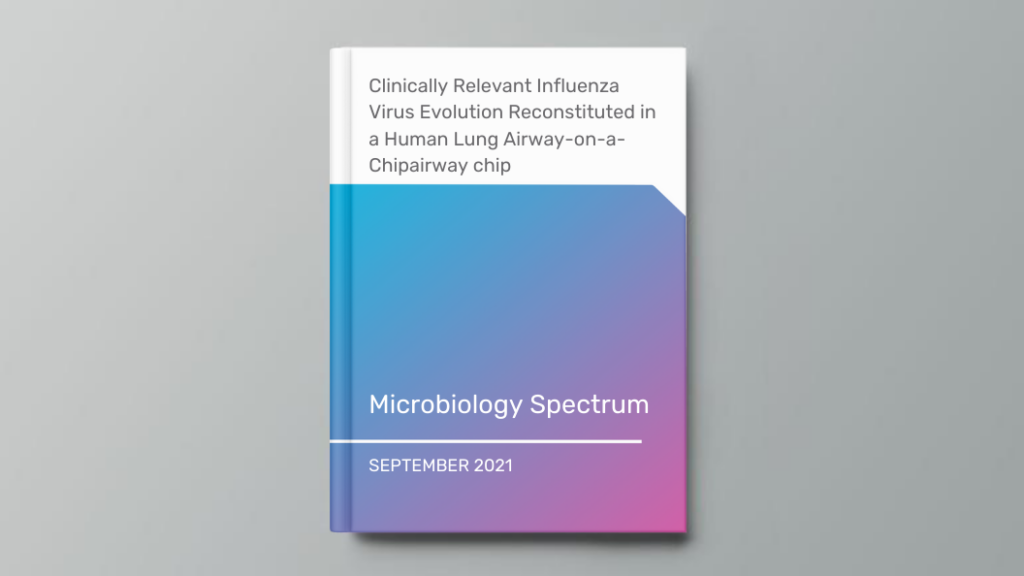Organ Model: Lung (Airway)
Applications: Infectious Disease
Abstract: Human-to-human transmission of viruses, such as influenza viruses and coronaviruses, can promote virus evolution and the emergence of new strains with increased potential for creating pandemics. Clinical studies analyzing how a particular type of virus progressively evolves new traits, such as resistance to antiviral therapies, as a result of passing between different human hosts are difficult to carry out because of the complexity, scale, and cost of the challenge. Here, we demonstrate that spontaneous evolution of influenza A virus through both mutation and gene reassortment can be reconstituted in vitro by sequentially passaging infected mucus droplets between multiple human lung airway-on-a-chip microfluidic culture devices (airway chips). Modeling human-to-human transmission of influenza virus infection on chips in the continued presence of the antiviral drugs amantadine or oseltamivir led to the spontaneous emergence of clinically prevalent resistance mutations, and strains that were resistant to both drugs were identified when they were administered in combination. In contrast, we found that nafamostat, an inhibitor targeting host serine proteases, did not induce viral resistance. This human preclinical model may be useful for studying viral evolution in vitro and identifying potential influenza virus variants before they appear in human populations, thereby enabling preemptive design of new and more effective vaccines and therapeutics. IMPORTANCE The rapid evolution of viruses, such as influenza viruses and severe acute respiratory syndrome coronavirus 2 (SARS-CoV-2), is challenging the use and development of antivirals and vaccines. Studies of within-host viral evolution can contribute to our understanding of the evolutionary and epidemiological factors that shape viral global evolution as well as development of better antivirals and vaccines. However, little is known about how viral evolution of resistance to antivirals occurs clinically due to the lack of preclinical models that can faithfully model influenza infection in humans. Our study shows that influenza viral evolution through mutation or gene reassortment can be recapitulated in a human lung airway-on-a-chip (airway chip) microfluidic culture device that can faithfully recapitulate the influenza infection in vitro. This approach is useful for studying within-host viral evolution, evaluating viral drug resistance, and identifying potential influenza virus variants before they appear in human populations, thereby enabling the preemptive design of new and more effective vaccines and therapeutics.

